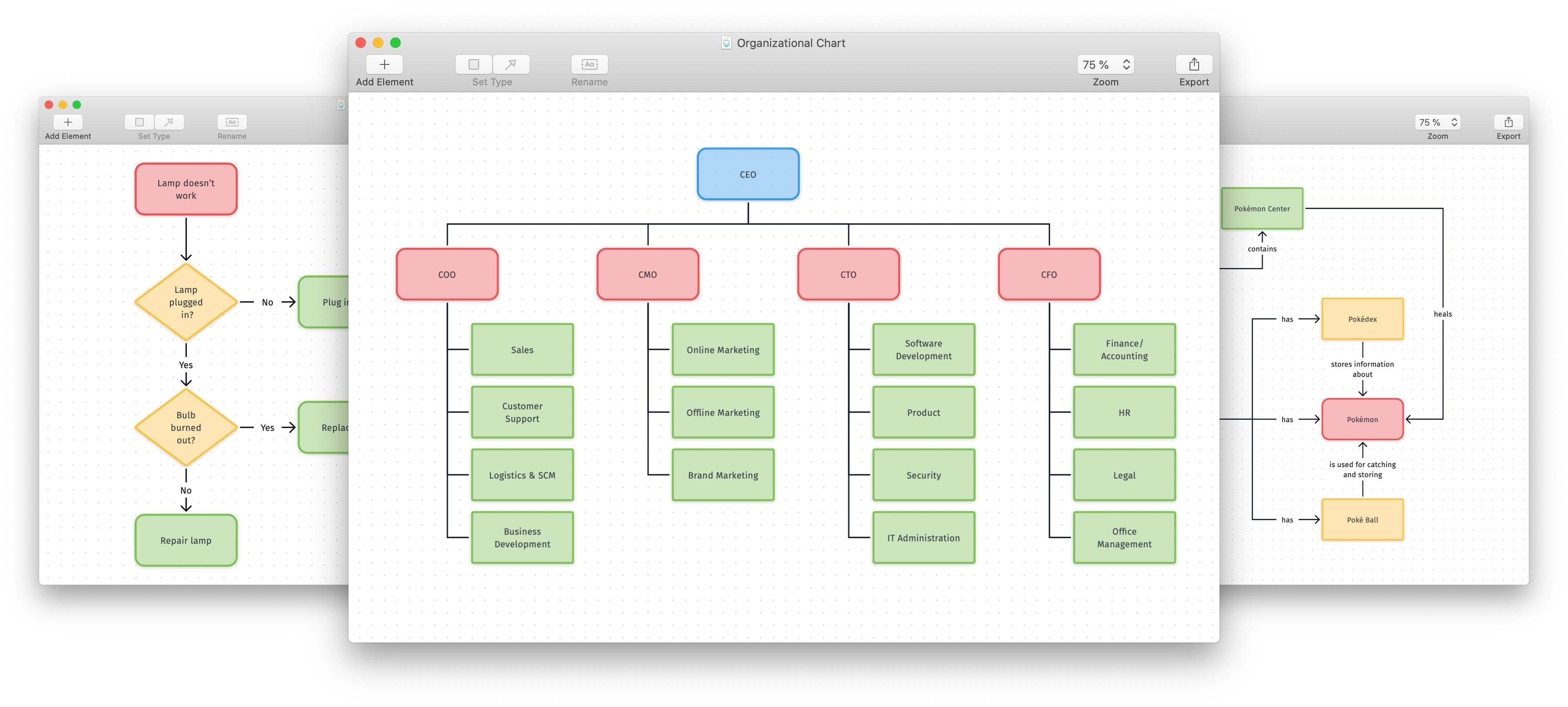
To make sure that your connector indeed “connects”, select any shape, and hit any of the arrow keys on your keyboard to nudge the shape.

Choose the Decision (Diamond) shape option from the Flowchart category within the Shapes gallery (refer to Figure 4, above). Now add a shape to represent a decision.Anything you type shows up within the flowchart shape, as shown in Figure 7, below.įigure 7: Text within your flowchart shape With your terminator shape still selected, start typing.Drag and draw on your slide, document, or worksheet to place an instance of the terminator shape, as shown in Figure 6, below.įigure 6: Place a Terminator shape to start your flowchart Your cursor will turn into a crosshair.Now, select the Terminator shape within the Flowchart shapes gallery (see Figure 5).Note: Want to know more about all the flowchart shapes? Look at our Flowchart Symbols: What They Represent? page. Hover your cursor over any of these shapes to see a tool tip that provides you with the name/description of the hovered shape (see Figure 4, below).įigure 4: Flowchart shapes are described within the tool tips There are 28 flowchart shapes available here. First let us explore the Flowchart category. Let us now explore the various shapes available within these categories.These are the Lines and Connectors and Flowchart categories, highlighted in red and blue respectively within Figures 2 and 3, above. To create flowcharts, only two of these categories matter to you. There are plenty of shapes that are arranged in various categories.

This brings up a Media browser window, with the Shapes tab active, as shown in Figure 3. In Excel (or even Word and PowerPoint), select the Insert | Shape menu option.Doing so brings up the Shape drop-down gallery, as shown in Figure 2, below. Locate the Insert group and within this group, click the Shape button. In PowerPoint or Word, access the Home tab of the Ribbon.Excel users can similarly use an available, blank range of cells in their workbook. If you are using Word, just substitute the blank slide area with a blank area on your document. Let’s start with a blank, new slide that contains a slide title and nothing else, as shown in Figure 1, below.Excel’s large screen real estate within each workbook does make it a great home for detailed or complicated flowcharts.

However, for larger flowcharts, you can use PowerPoint's hyperlinking options that let you spread the same flowchart over multiple slides. PowerPoint has similar slide constraints like Word's page constraints.



 0 kommentar(er)
0 kommentar(er)
